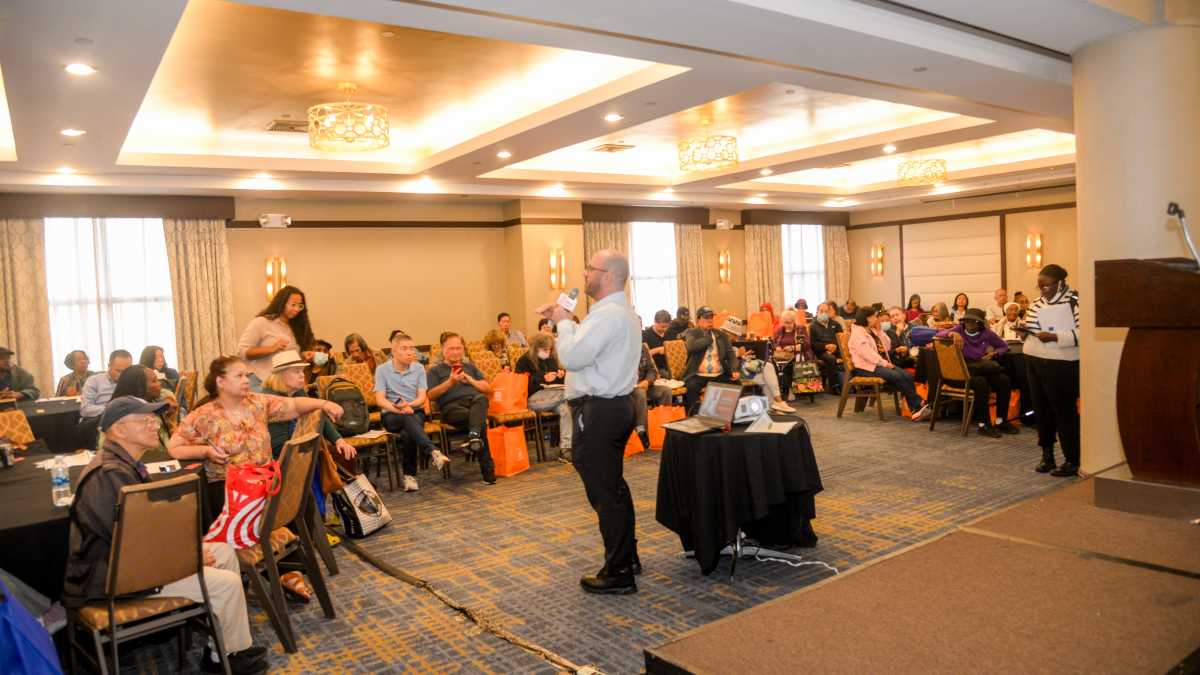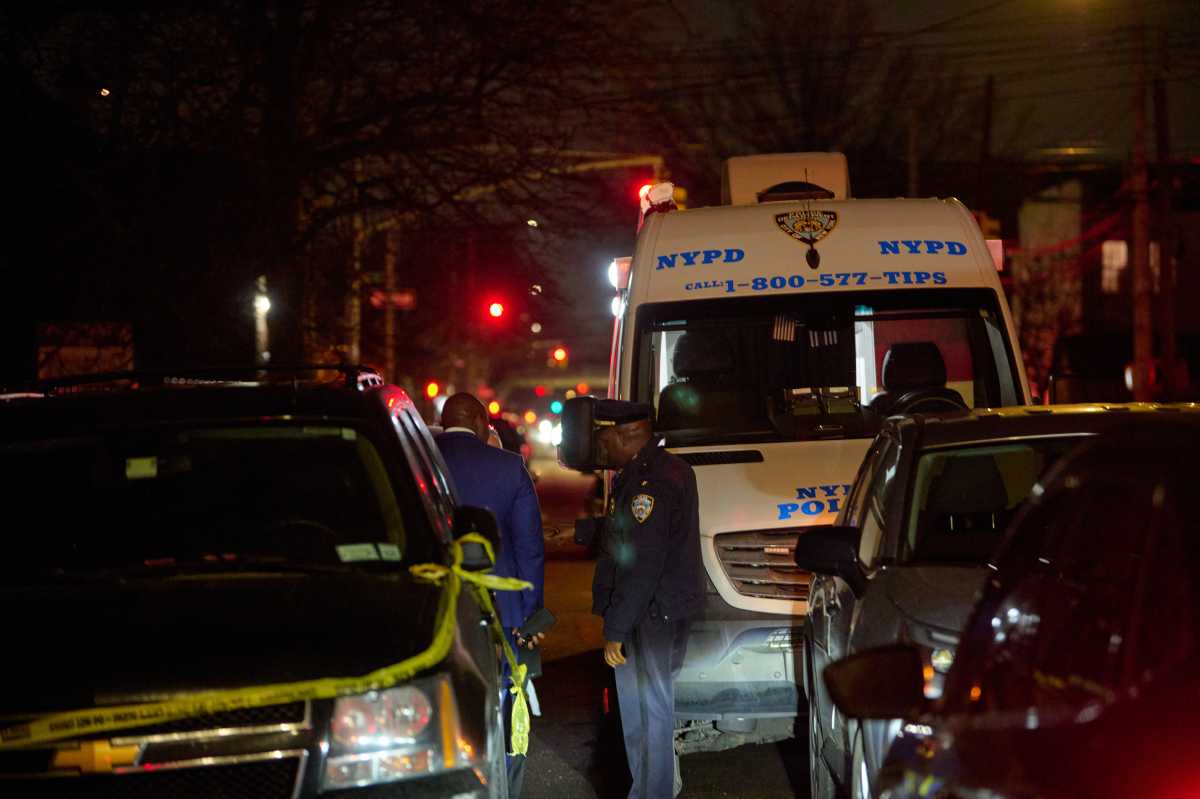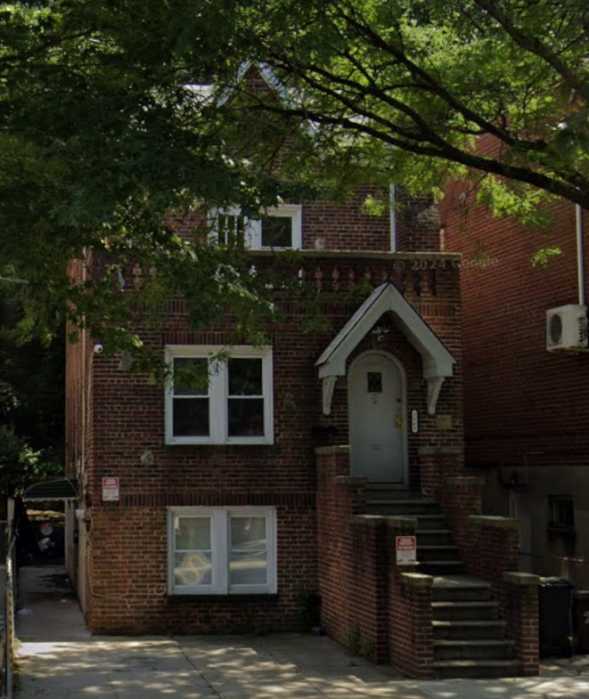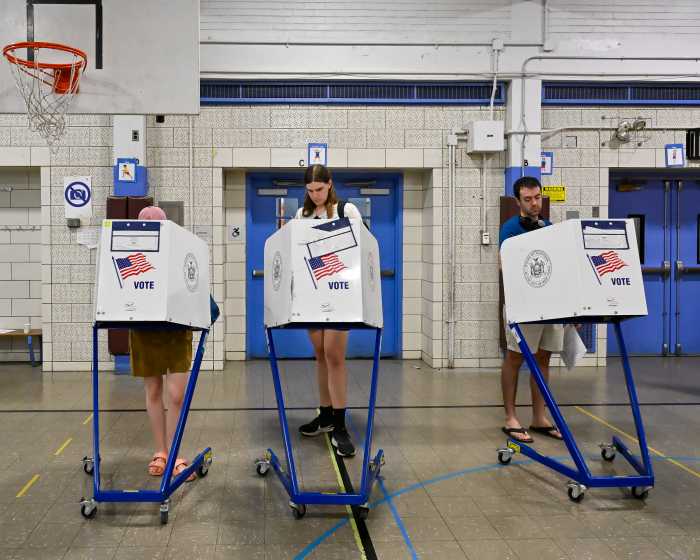By Elizabeth O’Brien
The developer of a residential complex planned for Greene St. has scaled back his project’s design, but neighbors say the proposal continues to flout a new law regulating construction on empty lots in Soho and Noho.
The developer, Ed Pearlstein, recently reduced the number of apartments planned for the parking lot at 92-94 Greene St./109 Mercer St. from 18 to 15, trimming the floor-to-area ratio from 6.13 to 5 for the two seven-story buildings that would share a common foundation. The F.A.R. change would result in slimmer, less bulky — though not lower — buildings. Pearlstein also agreed to eliminate the 18 balconies planned for the complex.
However, neighbors say more must be done for the project to conform to a new zoning regulation approved last fall by the Department of City Planning. This zoning amendment allowed for residential construction, within certain specifications, on 16 empty lots in the Soho and Noho historic districts, including the lot at 92-94 Greene St./109 Mercer St. Previously, only manufacturing and other commercial uses were permitted on these lots.
“The community is not getting a blade of grass from this,” said Jim Solomon, founder of Gang Greene, a Soho residents group. “We’re just fighting to get the developer to abide by the law.”
But the Greene St. project began well before the zoning change was approved, said Jay Segal, an attorney with the Manhattan law firm Greenberg Traurig, who is representing the developer. So the developer applied to the Board of Standards and Appeals for a variance to build outside of the lot’s specified uses.
While the developer was within his rights to approach the B.S.A., the project’s opponents say his plan should nonetheless respect the zoning change instituted soon after he filed his variance application. For example, the new zoning amendment requires a rear yard of 30 ft. for all residential buildings on the affected lots, a provision not met by the 20- and 24.6-ft. yards proposed by the developer of 92-94 Greene St./109 Mercer St.
The difference may seem small, but the rear yard space lost under the current design means that an entire column of windows on two adjacent buildings would be blocked, Solomon said.
Segal said that his client’s lot is smaller and more narrowly configured than all but one of the 15 other parking lots affected by the zoning change.
“It’s much harder to construct a building that complies with those restrictions on some of those lots,” Segal said. For example, the Greene St. lot will require more walls than a larger lot, Segal said, which adds considerably to construction expenses.
Segal said the developer agreed to certain reductions after an earlier hearing before the Board of Standards and Appeals, when it seemed the board was not receptive to some aspects of the plan. The current B.S.A. chairperson, Meenakshi Srinivasan, previously served as the deputy director of the Manhattan office for the Department of City Planning and was involved in the creation of last year’s zoning change for the 16 empty lots.
A spokesperson for the Board of Standards and Appeals did not return two calls for comment by press time. A hearing on the development will be held on Wed., June 9, at 10 a.m. at the Board of Standards and Appeals on the 6th floor of 40 Rector St. Members of the public may attend the hearing, and community organizers say this will likely be their last chance to voice objections to the proposal.







































